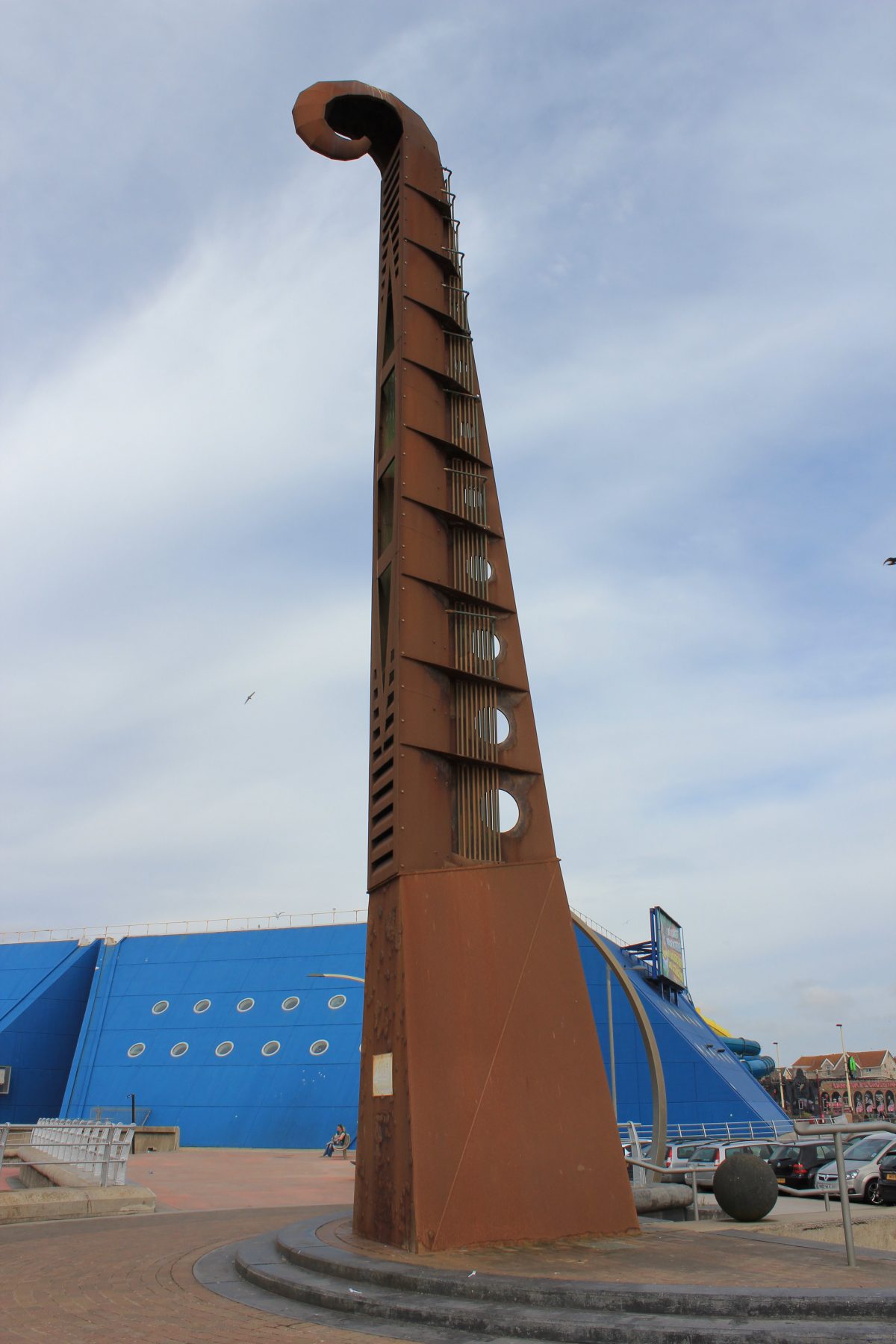Built in 2002 and designed by Liam Curtin and John Gooding, this organ stands next to Blackpool’s promenade. A narrow tall rusting sculpture shaped like a fern in spring beginning to unfurl, forms the most visible section of the wave organ. The sculpture uses church organ pipes that are sounded by air being forced through them by the ebb and flow of the sea waves. The music made depends on the vigour of the sea, sometimes it intermittently moans and groans, at other times it resembles a lazy orchestra of train whistles, or a slow-action replay of a nightmare recorder lesson.
Location
South Promenade, Blackpool FY4 1BB. Sounds best 2-3 hours before or after high tide. If the sea is calm, you won’t hear anything!






